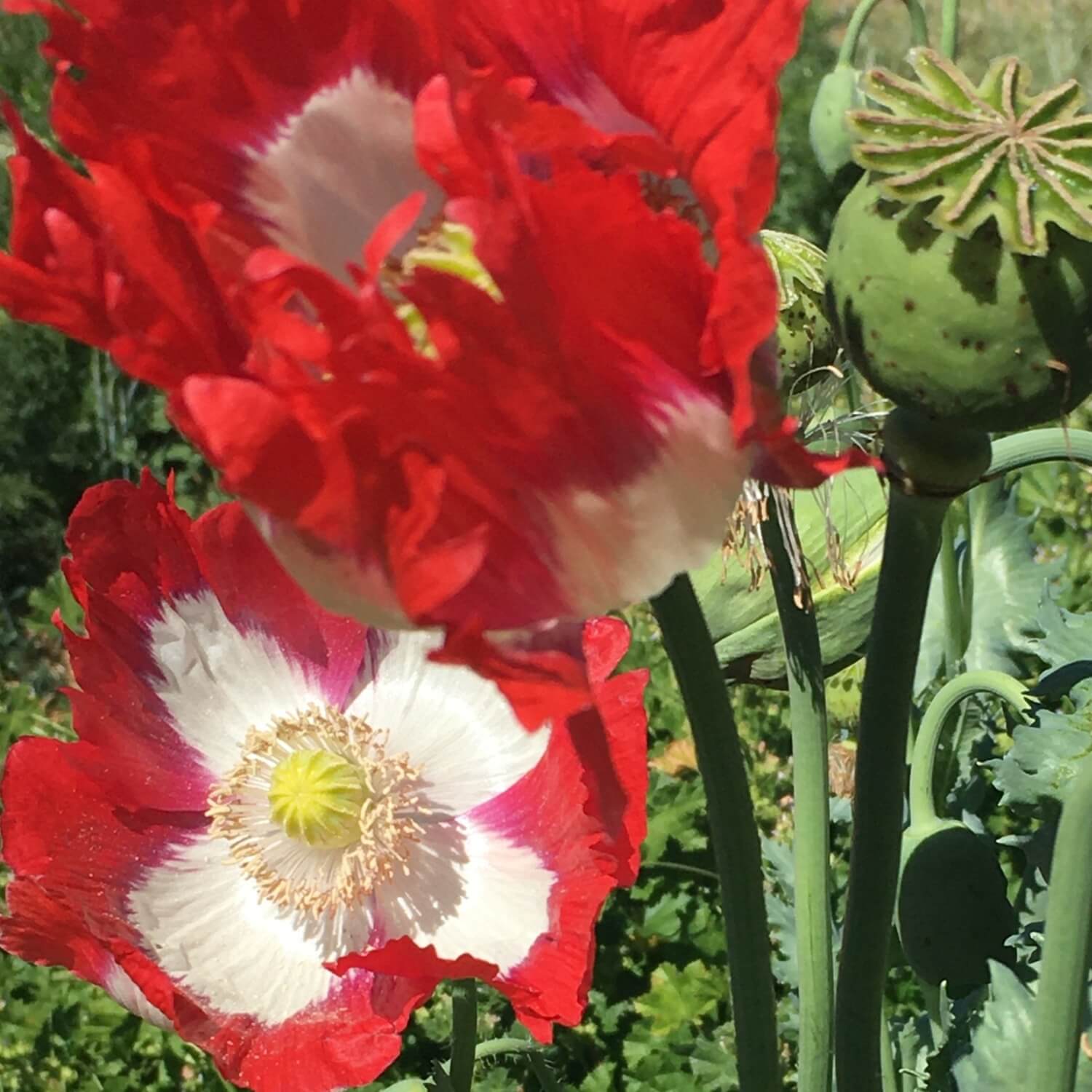
As I anticipate fall rains a few things come to mind: garlic, poppies and cover crops. These all like to be sown with the fall rains, provided they are not too late! Today we will explore cover cropping- what, why, how and when. Stay tuned for garlic and poppies.
What and why?
I plant cover crops for two main reasons.
1. To improve soil fertility through the planting of leguminous plants that, with the help of rhizobia bacteria, actually capture nitrogen from the air and fix it into the soil for plants to use. Wow, read that again. Amazing! This means cover cropping with plants like peas, fava beans and clover can drastically increase the amount of usable nitrogen in your soils.

2. Cover cropping loosens soils and adds organic matter to gardens. Simply growing a cover crop adds a lot of root mass to the soil that will increase organic matter. The leafy greens on top will protect the soil from compaction due to winter rains. Once mown, the greens too will add organic matter. For me this is a biggie. When I see a garden left as bare dirt over the winter months I sort of shudder inside as I imagine how compacted that soil will become.

If planting a cover crop isn't feasible, then straw mulch is another good option. The next best option is to mow down your summer garden and let it decompose on top of the soil over the winter. Both of these will provide some protection over the winter months.
How and When?
There are many methods to planting a cover crop and it really depends on your scale. For all methods the easiest time to plant is just before the rain. That way the rain waters in and germinates your seeds and, with any luck, you won't need to irrigate again until the spring. I understand that those rains do not always cooperate though! So it totally works to irrigate your cover crop as you would any other plant in your garden.
Raised bed gardens:
If you are gardening in your backyard in a few raised beds, or even straight in the ground you can easily cover crop any space that isn't full of winter veggies. If you are into planning crop rotations you could cover crop the area you plan to put your high nitrogen using plants next season, like corn. I usually go for a mix of peas and a grain such as oats or rye. The grain has root mass and will give the peas stability and the peas provide fertility.
These seeds can generally be broadcast over an area and covered roughly with a hoe or your fingers. When it comes to cover crop, the rule is a lot. Don't skimp on seed. You will be buying your cover crop seed by the pound, not the packet. And no, sorry we don't sell it. Since we grow most of our own seed it would be impossible to grow enough to sell for cover cropping.
Planting a field:
The most effective way we have found to plant a large space is to broadcast the seed and then either till or rake it into tilled soil. Most of the seed should be covered. This is where it is really great to have rain on your side because irrigating a large area with sprinklers or drip tape can be challenging for cover crops.
The best cover crop we ever grew was fava bean planted in February. That year the fall rains never came so we waited for early February and had a great strike. The photos in this article are from that year. You can see it was a while ago since my daughter was so young!
No Till Cover Cropping:
If you've been reading my posts for a while now you've gathered that I'm onto no-till methods. Honestly, I'm finding cover cropping and no-till to be at odds. It is challenging to plant the cover crop seed without tilling it in to cover a large area. I've tried a few different methods and think I've learned a bit.
My best success was planting peas into an old corn field. I broadcast Australian Winter peas into my corn field, about 1/4 acre, and then weedeated the corn stalks over the pea seed. The corn fodder mostly covered the seed and kept them moist during germination and we had a great cover crop. The following season we mowed the peas and used tarps to kill them off.
That same year I also broadcast the pea seed into other fields without mowing the crops down and had very little success. I've also tried broadcasting clover seed into crop residue with little success.
This year I plan to try broadcasting cover crop seed into my beds and then mulch over the seed to keep it covered and moist. Then, the vision would be to tarp the cover cropped beds in the spring and later plant through the mulch.
Are you planning to cover crop? My favorites include Austrian Winter peas, fava beans, crimson clover, rye, oats, and buckwheat. Buckwheat is a summer cover crop and I typically toss is all over my garden to attract pollinators and harvest seed from it.
If you have found a good method to cover crop and practice no-till methods I am all ears. Please share your story with me!
Happy fall gardening!
Kalan






